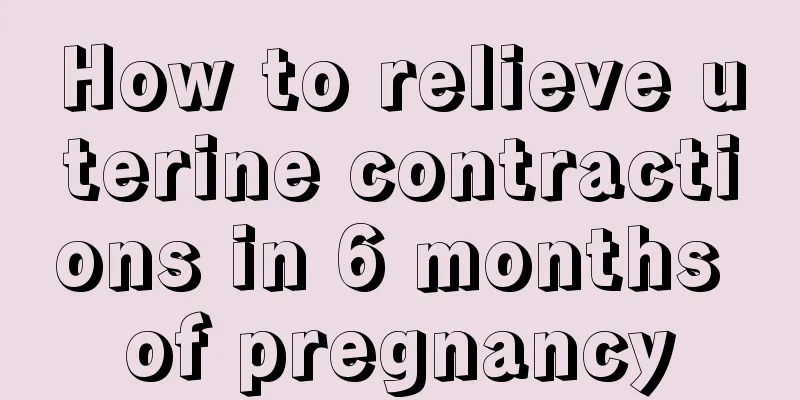Poor ovarian reserve function, caused by these six reasons

|
Ovarian reserve function refers to the quality and quantity of follicles stored in our ovaries. If a woman's ovarian reserve function is poor, it will greatly affect her body's ability to conceive. As women age, the quality and quantity of follicles will decline, so this problem must not be ignored. So let us understand what may cause our ovarian reserve function to be poor? What causes poor ovarian reserve function? 1. Immune factors: Most immune diseases such as immune thyroiditis, type 1 diabetes, lupus erythematosus, rheumatoid arthritis, etc. may cause premature ovarian failure. 2. Surgery: Removal of both or one ovary before the age of 40 may cause dysfunction of the ovarian and other tissues, leading to ovarian failure. 3. Some viral infections: For example, the mumps virus, which often causes reproductive problems in men and women, can cause ovarian inflammation, ovarian damage, and premature ovarian failure. 4. Amenorrhea: It is a common clinical condition with no obvious cause and occurs as secondary amenorrhea. It mostly occurs during the childbearing age and gradually leads to infrequent menstruation, amenorrhea and menopausal symptoms such as hot flashes and irritability. 5. Excessive weight loss: Rapid and improper weight loss will cause a sharp decrease in body fat. When the fat ratio is too low, it will lead to insufficient estrogen production. The decrease in estrogen will cause menstrual disorders and amenorrhea, and then inhibit the ovulation function of the ovaries, which can easily cause premature ovarian failure. 6. Chocolate cyst: If the ovaries have been suffering from blood stasis and inflammation, it will also lead to limited ovulation function of the ovaries and affect ovarian function in the long term. Symptoms and judgment of ovarian dysfunction 1. First observe the changes in the menstrual cycle: for example, if menstruation originally occurred every 28 to 30 days, the cycle gradually lengthens to more than 2 or 3 months. Some women may have shortened menstrual periods, with the cycle gradually shortening to once every 20 days. Irregular menstrual cycles are also one of the indicators. Some women may experience amenorrhea, and some women may experience hot flashes, night sweats and other symptoms. 2. The amount of menstrual blood was originally normal but gradually decreased or even disappeared. 3. The menstrual period was originally 5-7 days, but the flow has been reduced to 1-2 days. 4. If menstruation comes after the age of 18, or if menstruation comes 2-3 years after the appearance of secondary sexual characteristics, it is also a manifestation of ovarian insufficiency. |
<<: Symptoms of postpartum cervical erosion, young mothers should pay attention
>>: What should I do if the egg quality is poor?
Recommend
How to perform gynecological enema
Gynecological enema is also a relatively common t...
The lady has a dull pain in her lower abdomen when she lies flat
As a woman, it is easy to experience lower abdomi...
The best time to recover from pelvic pain
Modern women, due to the development of transport...
What is non-lactation lactation?
It is normal for women to secrete milk during bre...
[Medical Q&A] Why do children still get infected even though they get the flu vaccine every year?
Planner: Chinese Medical Association Reviewer: Ni...
Can pregnant women eat sea sausage?
Sea cucumbers actually contain relatively high le...
Is there any conservative treatment for ectopic pregnancy?
Ectopic pregnancy is also called extrauterine pre...
What kind of integrated cabinets are suitable for natural style? How to choose integrated cabinets with natural style
We all know that there are many kinds of decorati...
What to do if there are small bumps on the vulva
Female hygiene is particularly important, especia...
Pregnancy symptoms seven days after intercourse, pregnancy, manifestations, characteristics
We all know that many newlyweds are eager to have...
Is it better to grow lucky bamboo in pairs or in singles? How to choose the location of lucky bamboo?
Lucky bamboo is very common in our daily life. Be...
What is the cause of lateral breast hyperplasia?
Breast hyperplasia is a common breast disease amo...
Why does it hurt when girls urinate?
If women experience pain when urinating, they nee...
Can I drink buckwheat tea during menstruation?
Buckwheat tea is a kind of tea that is very popul...
Buttocks cramps in late pregnancy
Pregnancy is equivalent to the third stage of dev...









